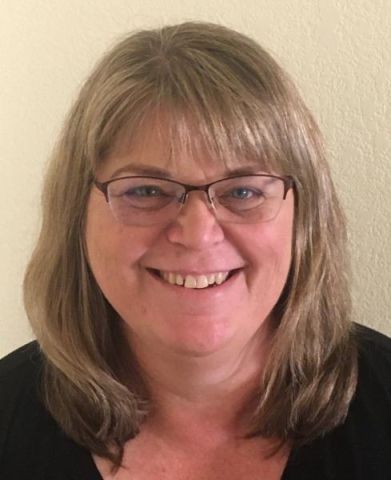In Michele Patrick’s nearly 30-year teaching career, one of the most transformative events has been teaching biotechnology at Porterville High School. It was something she unexpectedly fell into when the previous biotech teacher was retiring, but she fully embraced the challenge and is now in her third year teaching the Amgen Biotech Experience (ABE) curriculum.
“I had never been exposed to electrophoresis or using micropipettes or any of that,” Patrick says. “I had to learn as I went along, which was really exciting.” Right after getting assigned to the biotech class, Patrick signed up for the summer ABE training. Although she was at first nervous, the training gave her the confidence needed to forge ahead.
Patrick’s biotech class offers the only training in biotechnology in the entire district, located in California, north of Los Angeles. As a designated Health Academy, Porterville High School attracts students from throughout the district who apply to attend school there as incoming freshman, feeding from four comprehensive high schools.
A majority of Porterville’s student population is Hispanic, and Patrick says that many of her students would not have opportunities for learning biotechnology if not for the Health Academy and ABE. Her students always start off excited about the biotech class, but many do not really know what to expect once they get started: “I have to keep assuring them that the skills they obtain are going to help them as they progress through their educational careers.”
Already, Patrick has seen her students mature into competent lab technicians. One student has excelled to the point that she has become Patrick’s lab assistant, helping to prepare solutions and equipment. She is now encouraging this student to pursue lab work in college.
“What’s really great,” Patrick says, “is the higher-level thinking that comes from the lab series.” Patrick recalls when her class was doing the ABE transformation lab, and a team of teachers came in to observe as part of instructional rounds. “They look for certain things, like higher-level thinking,” she says, “and came out of my class very impressed, talking about how great the lab was.”
“I like the fact that there’s so much hands-on work in biotechnology,” Patrick says. “Biology now is so much different than when I started.” When she was an undergraduate animal science major in the late 1980s, biotechnology was in its infancy, with work only just starting toward mapping the genome. When she began teaching, the main hands-on labs were with microscopes and dissection.
Now, she says, biotechnology offers a way to do real-world science. “It’s what’s happening in the world—not some simulation; it’s the real thing.”
